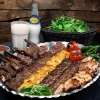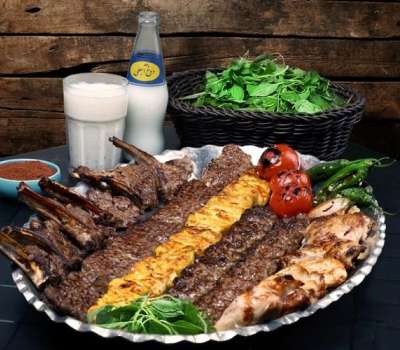
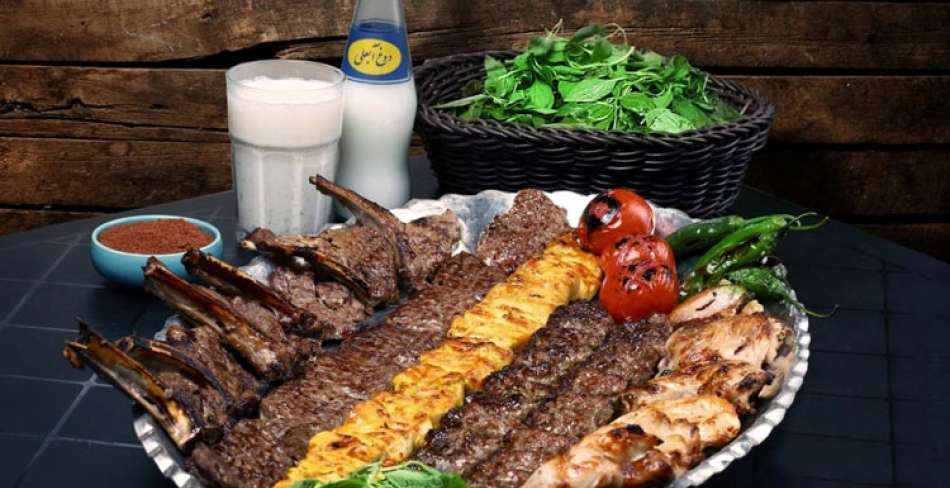
Traditional Iranian Cuisine consist of a considerable list of traditional dishes that combine the savory of fresh herbs, spices, rice, meat, vegetables, and nuts. Not only herbs, but also fruits such as plums, pomegranates, quince, prunes, apricots, and raisins are frequently used. Iranian mix and use characteristic Iranian flavorings such as saffron, dried lime and other sources of sour flavoring, cinnamon, turmeric, and parsley in various dishes.
Here, we render an introduction of the most popular traditional Persian cuisines.

Kebab
Kebab is taken very seriously in Iran. If you look at the restaurant kebab menu, you may be surprised to see a few pages just for different kinds of Kebab with the various features for every style and cut of skewerable meat. Kebab Koobideh (ground meat), Kebab Barg (barbecued beef), Chenje (meat in chunks) are the most popular kinds of kebab in Iran. After that Juje Kabab (grilled chunks of chicken) are favored. Kebab skewers are often served along with grilled tomatoes, rice, bread, and some pieces of raw onions. Some other types of Iranian kabab are kebab Shishlik or Shish Kebab (grilled large chunks of Kebab), Kebab Torsh (popular in northern region), Kebab Soltani, Kabab Vaziri, Kabab Bakhtiari (Mixture of barbecued meat and chicken), etc.
The drink that goes with Kebab is Doogh, Iranian yogurt drink.
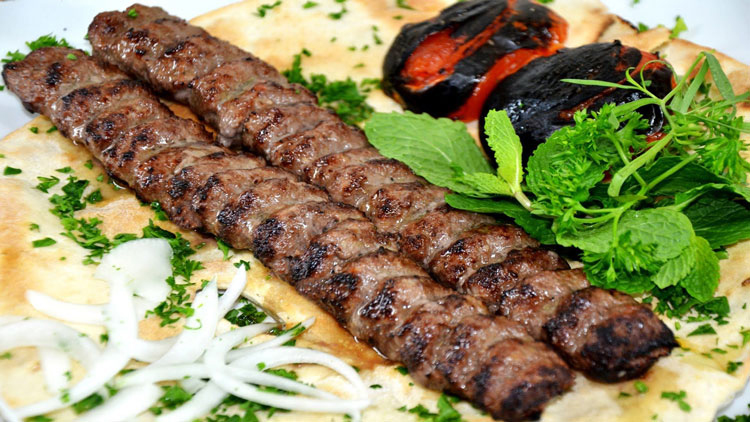
Stews or Khoreshts
The Iranian stews or Khoreshts are usually served with rice for lunch or dinner. The most popular stews are mentioned below:

Abgoosht
Abgoosht or Dizi is a Persian and Mesopotamian stew and one of the most traditional and popular foods in Iran. Abgoosht is made of lamb, chickpea, white beans, onion, potato, tomato, turmeric, salt, pepper, cinnamon and black lime. It is a high-calorie food and a rich source of protein. Abgoosht is usually served with pickled garlic (maybe other pickled vegetable), creamy yogurt, Doogh, raw onion, hot Sangak bread (a kind of traditional Persian bread), olive, sabzi (fresh raw vegetable) and radish.
It should be mentioned that this kind of stew is served with bread and not rice.
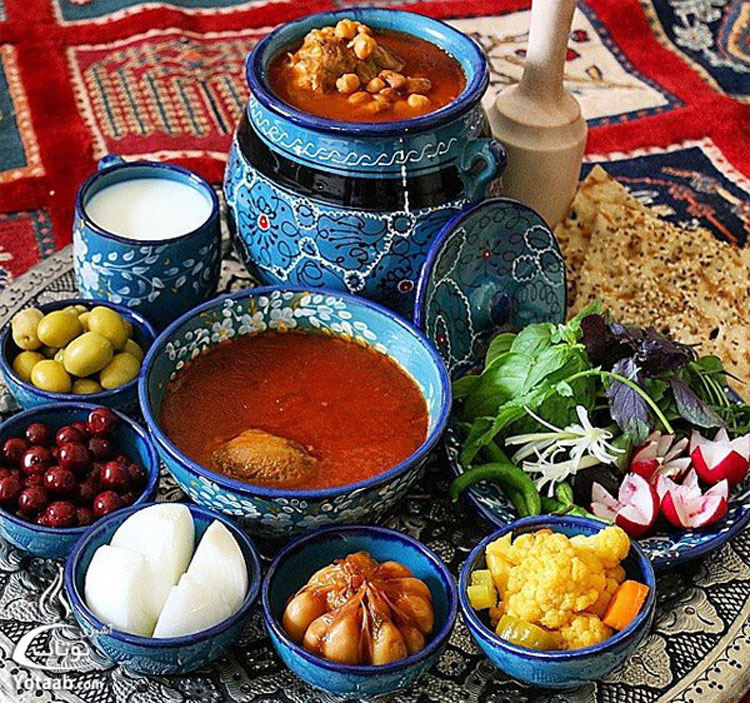
Ghormeh Sabzi Stew
Ghormeh Sabzi stew or Khoresh-e Sabzi, vegetable stew, with its pleasant smell and incredibly excellent taste is considered as the traditional dish and one of the most popular stew among Iranians. You could rarely find one individual who does not like it. It is a combination of spices and a wide range of herbs, red kidney beans, meat, onion, turmeric powder, dried limes, salt and hot pepper powder. Vegetables in Qormeh Sabzi include parsley, chive, dill leave, spinach, leeks and cilantro that need to be grounded. Ghormeh Sabzi is served with rice and would be great with yogurt, Doogh, Salad Shirazi and the different kinds of pickles. Ghormeh Sabzi is served with rice.
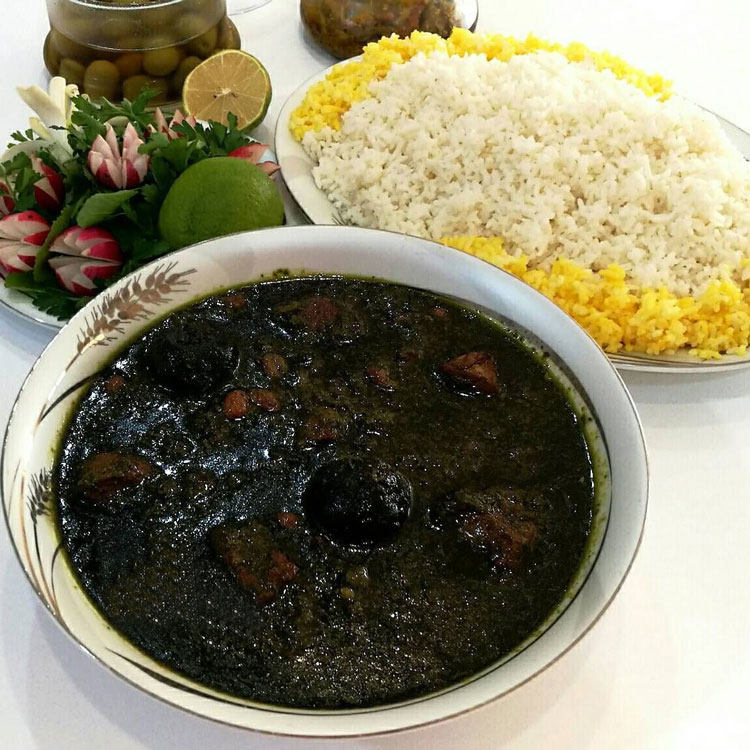
Fesenjan Stew
Khoresh Fesenjan or Khoresht-e- Fesenjoon, as locals call it, is one of the most popular Iranian dishes served in sweet or savory flavor. The main ingredients of Fesenjan include ground nuts, pomegranate paste, and chicken (or meat depending on your choice, chicken is the most common). It is known that variations for Fesenjan stew are regional: the sour and savory Fesenjan originally goes to the north of Iran and the slightly sweeter versions appear in other parts. Fesenjoon usually is served during holidays and on special occasions. Fesenjan is made of onion, chicken pieces or meatballs, ground nuts, water, pomegranate paste, salt and black pepper. Fesenjan is served with rice.
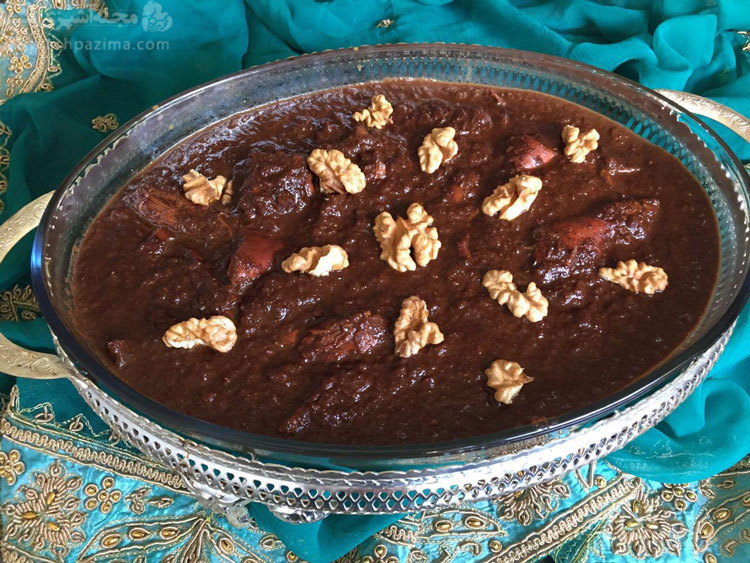
Gheimeh Stew
Gheimeh stew, locals call it Khoresh Gheymeh, is a very traditional and popular Iranian stew. The word gheymeh refers to how the meat is cut into small cubes or chunks. Traditionally, Gheymeh is made of lamb or beef. Khoresh Gheimeh consists of split pea, potato (frenh fries), meat, tomato paste, oil, onion, dried lime, salt, spices and water. Another famous variety of Gheimeh is Gheimeh bademjan with difference that potato (French fries) is replaced by fried eggplant.
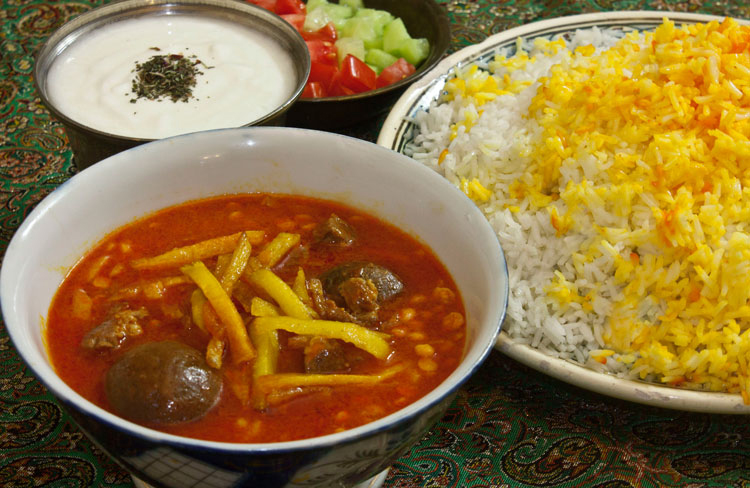
Iranian Rice Dishes:
Rice is the most common and stable food eaten in Iran and has a main role on Persian table. There are two main manners of cooking rice with some differences. Both have a wide number of varieties in Iranian foods: Polow and Chelow or Cholo. Polow consists of vegetables or meat cooked and mixed with rice like Adas Polow (Lentil Rice), whereas Chelow is the kind of rice served with different kinds of kebabs and stews.

Some of the Iranian rice cuisines are:
Koofteh Tabrizi or Tabriz Köftesi
Tabriz köftesi or Tabriz Köfte is an Iranian meatball recipe originated from north west region of Iran, the city of Tabriz. It is in the form of a huge meatball with delicious ingredients inside. Koofteh Tabrizi is served with Sangak or Lavash bread, Sabzi (fresh raw vegetables), prickle. The main ingredients needed to make Tabriz köftesi are: ground meat, onion, yellow split pea, rice, potato, egg, chives, parsley, tarragon, mint, saffron powder, salt, turmeric powder, and pepper powder.
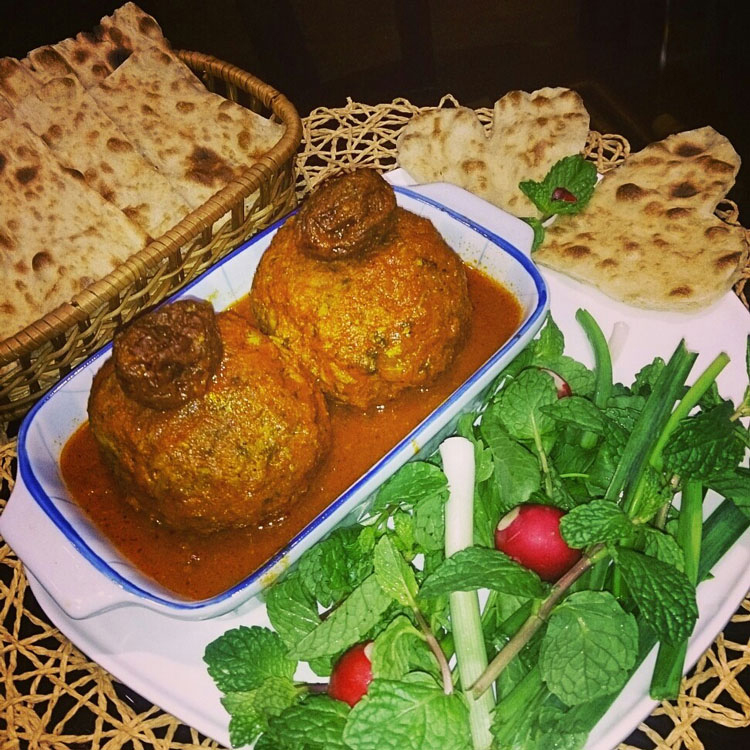
Baghali Polo (Persian Fava Bean Rice)
Baghali polo or Persian dill rice is one of the famous and popular rice dishes. The ingredients to cook Baghali Polo are rice, fava beans, dill, salt, saffron and oil (butter in preffered). The Persian Fava Bean Rice can be served with chicken (in gravy, baked or whole roasted chicken), fish (fried, grilled or baked) or with Lamb. It is not only tasty, but also fragrant and can be found on the menu of nearly all Persian restaurants. The siders include Sabzi, prikle, and yogurt.

Zereshk Polo ba Morgh (Barberry Rice with Chicken)
Zereshk Polo ba Morgh or Barberry rice with chicken is another popular traditional Persian food. You need rice, chicken, barberries (known as Zereshk in Persian), sugar, saffron, salt and pepper. Zereshk Polow is regarded a ceremonial food in Iran and would be found at every restaurant menu, as well as Persian lunch/dinner parties, weddings and most celebrations and holidays. It can be served with a variety of stews, the most frequent one is saffron chicken (Morgh in Persian). Soup, salad, prickle, Sabzi are right matches served with Zereshk Polo ba Morgh.
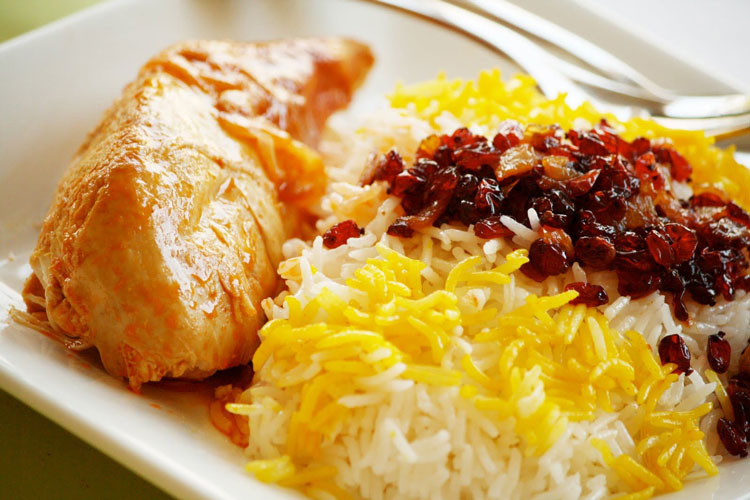
Tahchin (Persian Baked Rice Cake)
Tahchin (literally means arranged in the bottom) or Persian baked rice cake is one of the most Iranian favorite food which mainly consists of rice, yogurt, and saffron. The most popular Tahchin among Iranians is Tahchin Morgh made with chicken. Tahchin is a layered cuisine with a layer of saffron rice, then a layer of chicken, the arrangement repeats in desired times. There are different other types of Tahchin and all of them include layering rice and some type of meat with other ingredients, such as Tahchin ba Mahicheh in which chicken is replaced by lamb. In short, the ingredients for cooking Tahchin Morgh (chicken) include rice, chicken, yogurt, egg, saffron, onion, turmeric, water, and salt. Salad and Sabzi are matching siders.
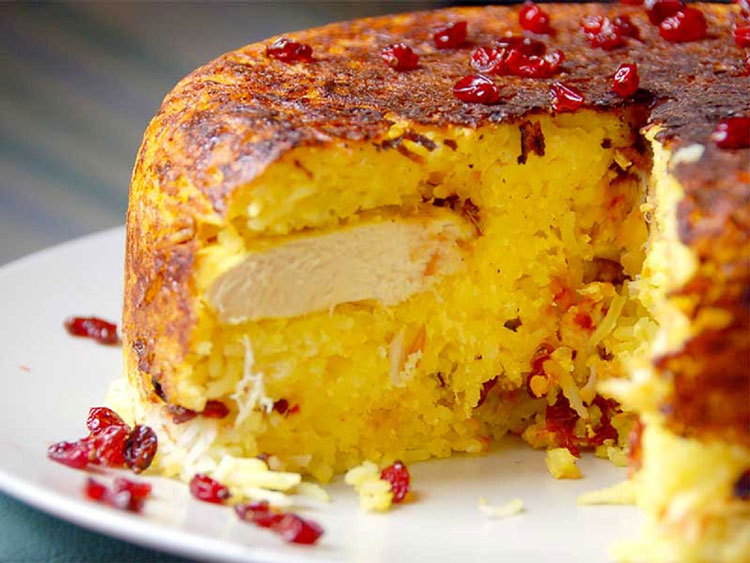
Adas Polo (Lentil Rice)
Adas Polo or lentil rice is another delicious Persian rice layered with lentils. The main ingredients of Adas Polo are lentils and rice. This delicious and hearty Iranian dish is made by a combination of rice, lentil, onions, oil, saffron, ground beef¸ raisins, garlic, potato, salt and pepper and spices such as cinnamon. Its sweetness comes from the dates and raisins. Lentil rice is also suitable food for vegetarians and vegans because some people prefer to prepare Lentil Rice without adding the ground beef and serve it as a vegetarian dish. It is usually served with Salad Shirazi and prickle.
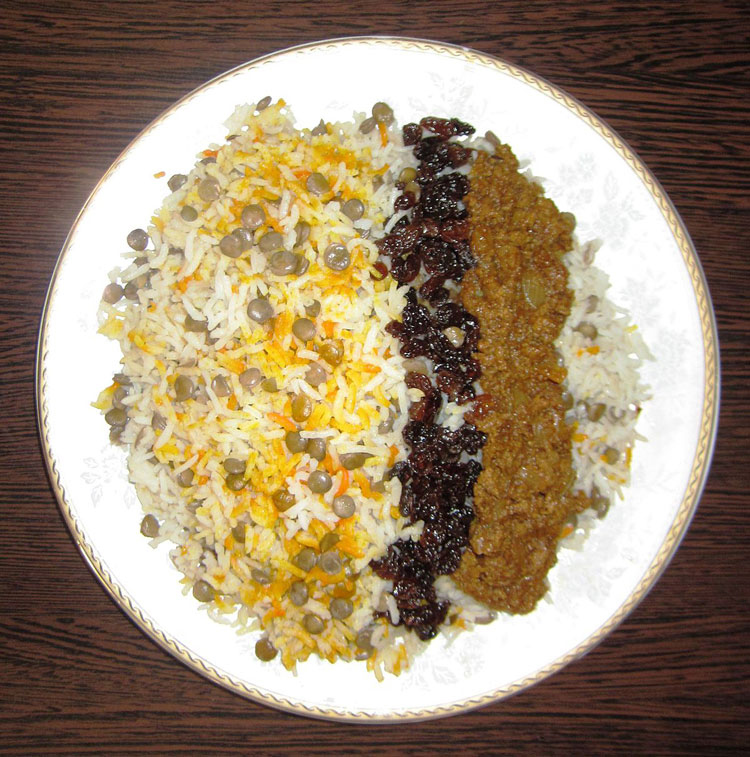
Dolma
Dolma is originally a Mediterranean cuisine that came to Iran from Ardabil city, in the north-west of Iran, then it went through other cities of the country. Stuffed vine leaves, Dolma, is a very popular cuisine among Iranians. Persian stuffed grape leaves usually contain ground beef and rice along with various herbs. It should be mentioned that Dolma does not come only in Stuffed Vine Leaves and it comes on other forms such as Dolma Felfel (filled pepper bells), Dolma Bademjoon (filled eggplant), Dolma Kalam (filled cabbage). The ingredients of Dolmeh Barg-e Mo, the most popular type of Dolma, are vine leaves, ground beef, onion, yellow split peas, dried chives and savory (dried tarragon, basil, dill, parsley or mint), rice, salt, hot pepper powder and turmeric powder. To make the best of Dolma, have it with Sangak bread. Dolma is often served with yogurt and Salad Shirazi.
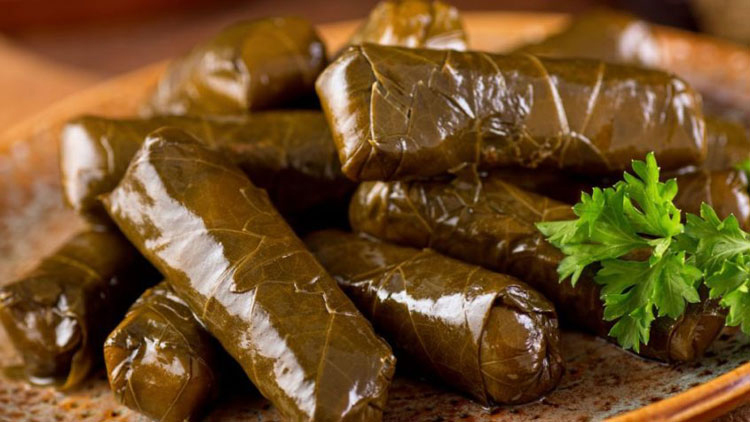
Soup
Another group of Iranian cuisines are soups which are called Ash in Persian. Here, we introduce the most popular soups local in Iran.
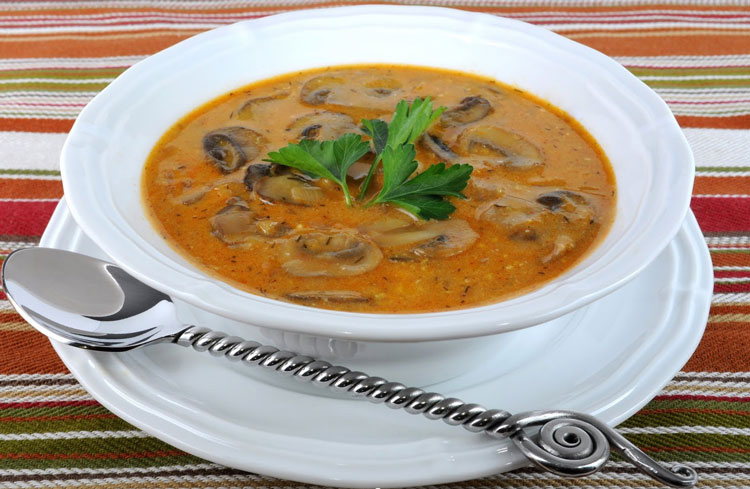
Ash Shole Ghalamkar
Ash Shole Ghalamkar is a Persian cuisine originally from Isfahan, however, it can be found in other cities. It is actually sort of thick soup or stew. The main ingredients of Ahe Ghalamkar include beans, peas, lentils, leafy vegetables, rice, meat and so on. It can be served for breakfast, lunch or dinner and is considered a complete meal as it rich in protein vitamins, and minerals required for the body.

Ash-e Doogh
Ash-e Doogh or Yogurt Soup is an Iranian cuisine originated from Ardabil. However, you can find it in many regions of Iran, especially in northwest and nomad regions. The main ingredient of the soup is Doogh (yogurt drink) or yogurt that is why it is called Ash Doogh with the difference that yogurt makes the ash taste sweet and doogh make it taste sour. In addition to doogh (or yogurt), other ingredients of the soup include different kind of herbs such as coriander, leek, tarragon, mint, and parsley, spinach, purslane, chickpeas, peas, onion and garlic, lamb meatballs, eggs, rice, salt and spices. Traveling to nomad regions, surely you will be served with a bowl of Yogurt Soup. Bon appetite!
There are other popular types of Iranian soups that are presented in Vegetarian and Vegan Persian Foods article. Click on the link to read about them.
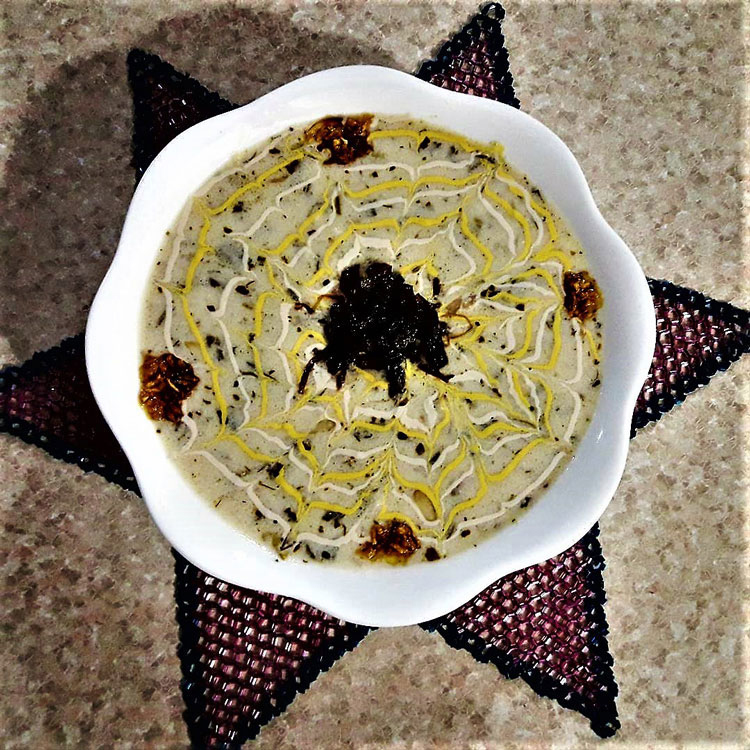
In Addition to soup, there are a few other Iranian dishes without meat. Click to read about Persian foods for Vegetarians and Vegans.
In Yazd, you can find these traditional persian dishes in the restaurant introduced here.





























